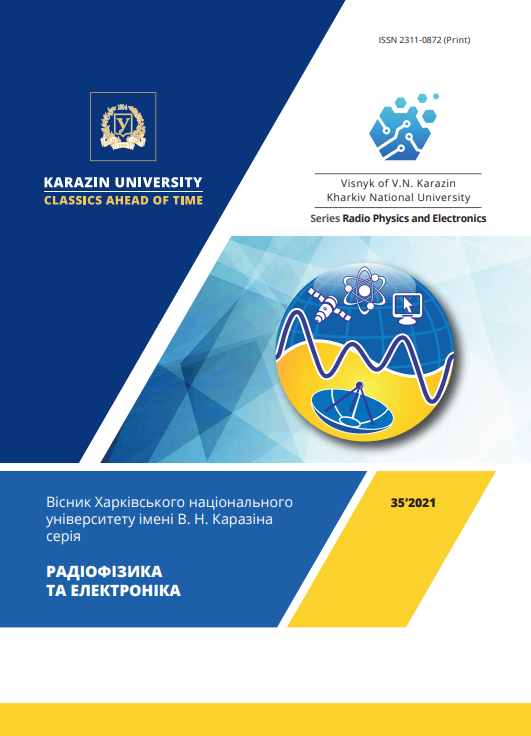About reducing the visibility of complex object on the background of underlying surface
Abstract
Relevance: Reducing the radar visibility of an object is an important task in the creation of military equipment. Real objects are often located on some underlying surface, which leads to a significant increasing in the scattered field by such a system in comparison with the scattered field by only object without taking into account re-reflection from the underlying surface. The development of methods for reducing the reflected field plays an important role among the tasks of reducing radar signature.
The purpose of the work is to consider the existing methods for modeling the scattering of electromagnetic waves on complex shape objects against the background of the underlying surface, analyze the level of the reflected field components. To propose methods for reducing the radar visibility of an object. To carry out a simulation for some object in order to assess the effectiveness of the proposed methods.
Materials and methods: The problem of diffraction on the complex shape object, which located on the underlying surface, is solved. In this case, different components of the scattered field are taken into account: single reflection from different elements of the object's surface (physical-optical component); one-time re-reflections between different parts of the object; re-reflection between the object and the underlying surface. In numerical modeling, the scattered field on an object located on the underlying surface, the underlying surface is considered as a rectangle of finite size.
Results: The possibilities of optimizing a model of the complex shape object in order to reduce its radar visibility are considered. In particular, geometric modifications of the object's surface and the using radio-absorbing materials are considered. In order to demonstrate the effect of these techniques, using a technique previously proposed by the authors for determining the scattered field by an object of complex shape located against the background of the underlying surface simulations have been carried out.
Conclusion: Methods of optimizing a model of the complex shape object to reduce its radar visibility are proposed. For most real objects, the largest contribution to the total reflected field is made by the field reflected from the smooth part of the object and the re-reflection field between parts of the object and between the object and the underlying surface.
Downloads
References
2. Tikhonov AN, Samarsky AA. Equations of Mathematical Physics. Textbook. Moscow: Publishing house of Moscow State University. 1999; 798 p. (In Russian).
3. Henl H, Maue A, Westpfal K. Diffraction Theory. Moscow: Mir; 1964; 424 p. (In Russian).
4. Vainshtein LA, The theory of diffraction and the method of factorization, Moscow: Soviet Radio; 1966; 475 p. (In Russian).
5. Mentzer JR. Diffraction and scattering of radio waves. Moscow: Soviet Radio; 1958; 475 p. (In Russian).
6. Born M., Wolf E., Fundamentals of Optics. Moscow: Nauka; 1970; 713 p. (In Russian).
7. Volman VI, Pimenov YuV. Technical electrodynamics. Moscow: Svyaz; 1971; 487 p. (In Russian).
8. Ufimtsev PYa. Theory of diffraction boundary waves in electrodynamics. Moscow: Binomial. Knowledge lab. 2013. - 372 p. (In Russian).
9. Ruck GT, Barrick DE, Stuart WD, Krichbaum CK. Radar cross section handbook, v. 1-2; N. Y. London: “Plenum Press”; 1970; 50-59.
10. Lvova LA. Aircraft radar signature. Snezhinks: RFNC-VNIITF Publishing House; 2003; 232 p.
11. Gao PC, et al. Parallel shooting and bouncing ray method with virtual divergence factor for fast analysis of scattering from complex targets. Progress in Electromagnetic Research Symposium; IEEE; 2016.
12. Rao GA, Mahulikar SP. Integrated review of stealth technology and its role in airpower. Aeronautical Journal; 2002 106 (1066): 629–641.
13. Kovalev SV, Nesterov SM, Skorodumov IA. Determination of EPR of objects taking into account re-reflections from the earth's surface; Radio engineering and electronics; 1996; vol. 41, 1304–1310.
14. Khrychov VS, Legenkiy MM. Method of calculating the effective scattering surface of an object of complex shape located on the underlying surface with an arbitrary reflection coefficient; Visnyk of V.N. Karazin Kharkiv National University. Series "Radiophysics and Electronics". 2021; № 34: 48-55. (In Ukrainian).
15. Khrychov VS, Legenkiy MM. Different components of the electromagnetic scattering of complex shape objects Proceedings of the IEEE microwaves, radar and remote sensing symposium; 2020; 478-481.




